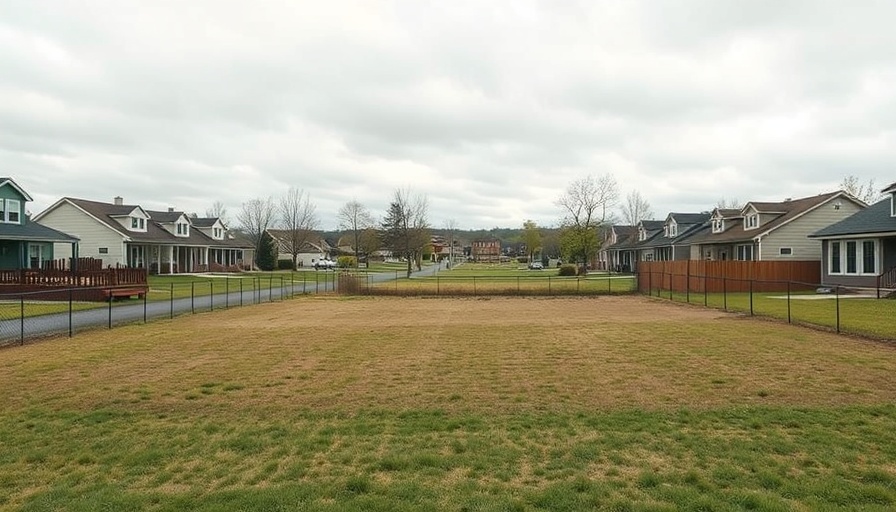
What Is a Land Value Tax (LVT) and Why Does It Matter?
The concept of a land value tax (LVT) shifts our perspective on property taxation, focusing on the value of the land itself rather than the buildings or improvements made upon it. This change in approach can help tackle the housing crisis many cities face today, especially when high property taxes are pushing potential homebuyers and renters out of the market.
Understanding the Mechanism of LVT
Unlike traditional property tax systems, which assess taxes based on both land and structures, an LVT only considers the land's value. This system creates a clear distinction: a plot of land's worth is derived from its location, which benefits from surrounding developments—such as parks, schools, and thriving businesses. By taxing land rather than buildings, the LVT encourages property owners to develop vacant parcels, which in turn can lead to an increase in available housing.
The Economic Argument for LVT
Under current taxation methods, property owners, especially those with developed properties, face higher tax burdens. For instance, a single-family home in a desirable neighborhood often bears taxes significantly higher than those of a vacant lot. This disparity can discourage investment and development, keeping valuable land underutilized. Proponents like Greg Miller argue that an LVT would shift the economic incentives, aligning them in a way that promotes housing development and helps stabilize the real estate market.
Potential Impacts on Homebuyers and Renters
If implemented, the land value tax could drastically alter the landscape for homebuyers and renters. By alleviating the tax burden related to building improvements, property owners would feel more motivated to construct new homes, ultimately increasing the housing supply. Over time, this could lead to a decrease in real estate prices as the market responds to an influx of available properties, benefitting those searching for homes for sale, apartments for rent, and even luxury real estate options.
Historical Context and Global Examples of LVT
The concept of LVT isn't new; it has historical roots in various economic theories and practices. Several countries, including parts of Australia and Hong Kong, have successfully integrated land value taxes into their revenue systems. These examples provide compelling evidence of LVT's role in stimulating development while promoting affordable housing—an angle that could serve as a beacon of hope for cities grappling with housing shortages.
Counterarguments: Challenges and Misconceptions
While LVT presents numerous potential benefits, there are also notable challenges and misconceptions. Critics argue about the feasibility of converting existing tax systems; concerns about the initial transition could deter lawmakers from adopting it. Furthermore, there's a fear that property owners will simply pass increased land taxes down to renters, effectively nullifying the benefits created by the tax system. Understanding these challenges is vital to facilitating a productive discussion about how best to implement property tax reform.
Looking Forward: The Future of LVT in the Housing Crisis
As urban areas continue to experience population surges, the demand for housing only increases. An LVT could play a pivotal role in redefining how cities approach land use and housing development. By encouraging efficient land utilization, the LVT can offer a comprehensive solution to the chronic housing shortages affecting communities nationwide. Interested readers should monitor local policy discussions on this issue and advocate for studies that analyze and demonstrate the potential of the land value tax.
Practical Insights for Real Estate Stakeholders
For real estate professionals and investors, understanding the dynamics of LVT is career-enhancing. Staying informed about proposed reforms can facilitate better decision-making, whether you are helping clients navigate homes for sale or diving into real estate investment opportunities. Keeping an eye on policy changes can position agents as trusted advisors in a rapidly shifting market.
In conclusion, the land value tax resounds with promise in addressing the ongoing housing crisis. Implementing significant reforms can create more opportunities for housing availability and improve the overall real estate landscape. As policymakers begin to consider LVT as a viable solution, it’s time for stakeholders to remain engaged and informed, facilitating a transition to a more sustainable real estate ecosystem.
 Add Row
Add Row  Add
Add 



Write A Comment